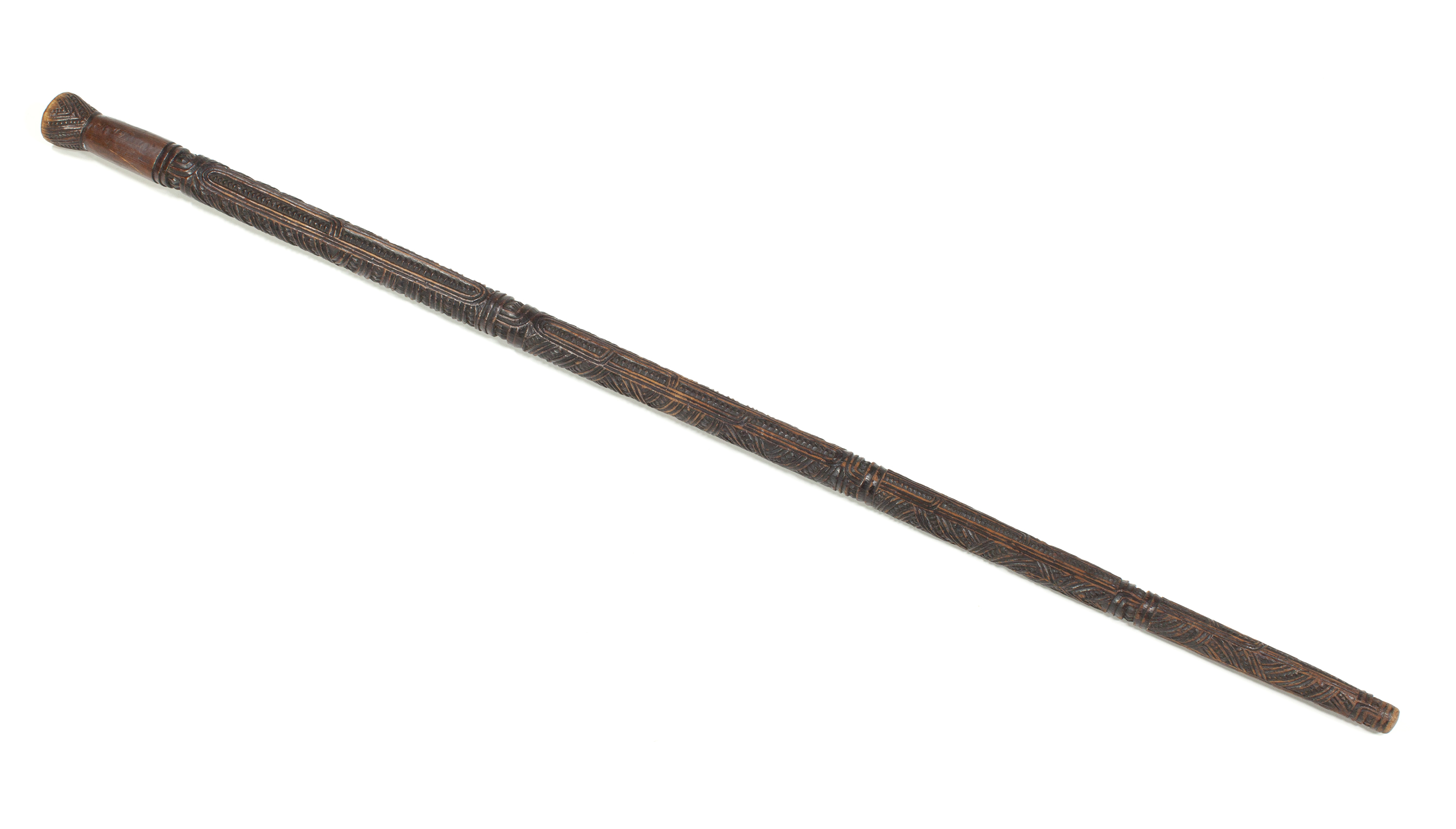Sometimes the donation of an item to the Museum's collection takes a curator on a journey of discovery.
This happened to me when a tokotoko (walking stick) connected to nineteenth-century Cantabrians James and Eliza Stack was donated to the Museum last year.
Undertaking research to confirm the provenance of the tokotoko and to establish how the taonga fitted with Canterbury Museum’s existing collection led me to a story that I was not familiar with: that of Anglican Missionary James Stack and his intrepid wife Elizabeth (Eliza) Rachel Jean née Jones. I also discovered that donations connected to the couple spanned 153 years, from Canterbury Museum’s inception in 1867 to the present day.
James West Stack was the son of missionary James Stack and his wife Mary West and was born at Puriri, Thames, in 1835. He lived in England between 1848 and 1852 and travelled back to New Zealand with his friend Tāmihana Te Rauparaha to work as a teacher for the Church Missionary Society. He was ordained deacon shortly after joining the Māori Mission of the Diocese of Christchurch in 1859. Soon afterwards he became friends with Canterbury Museum founder Julius Haast.
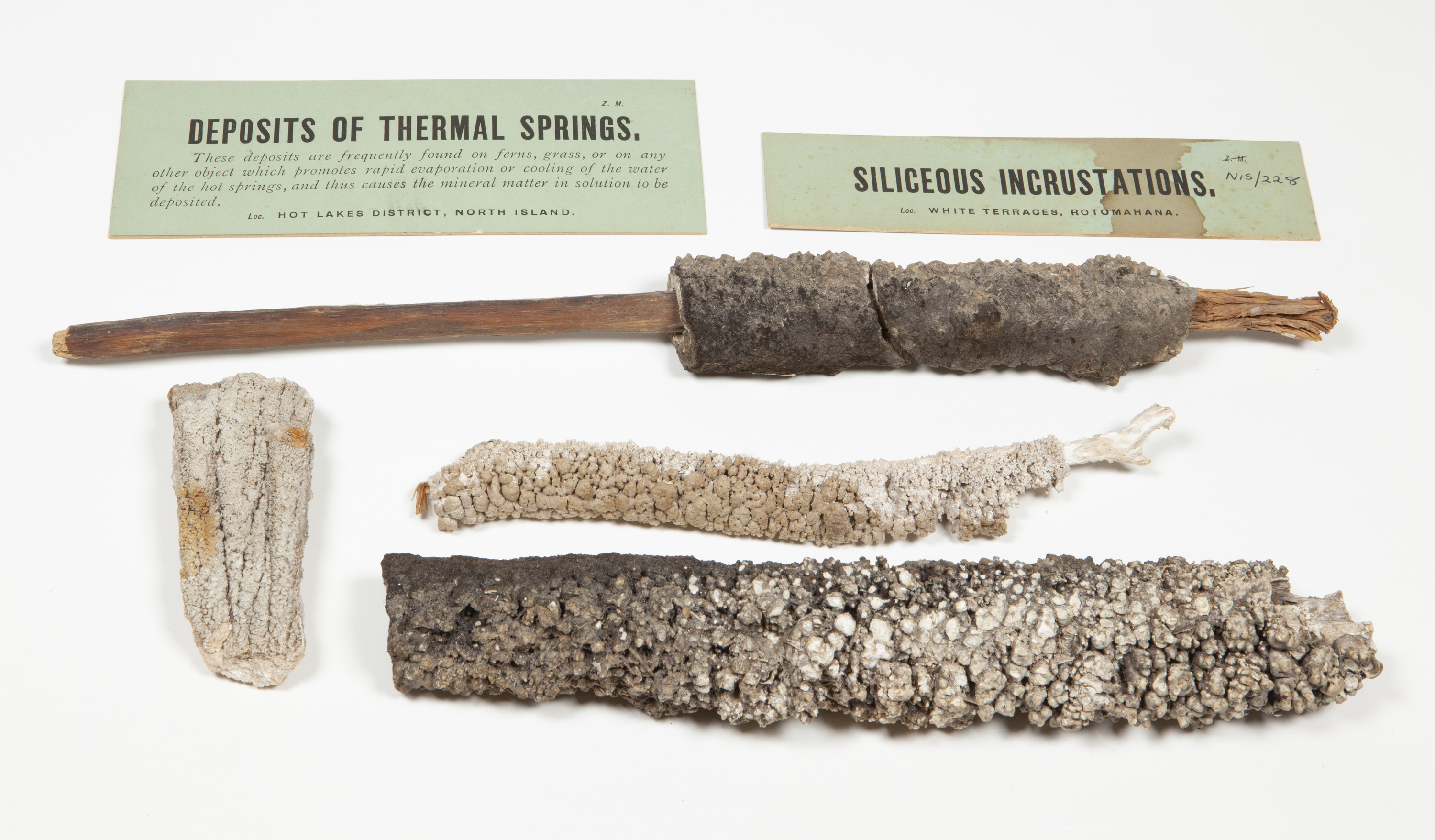
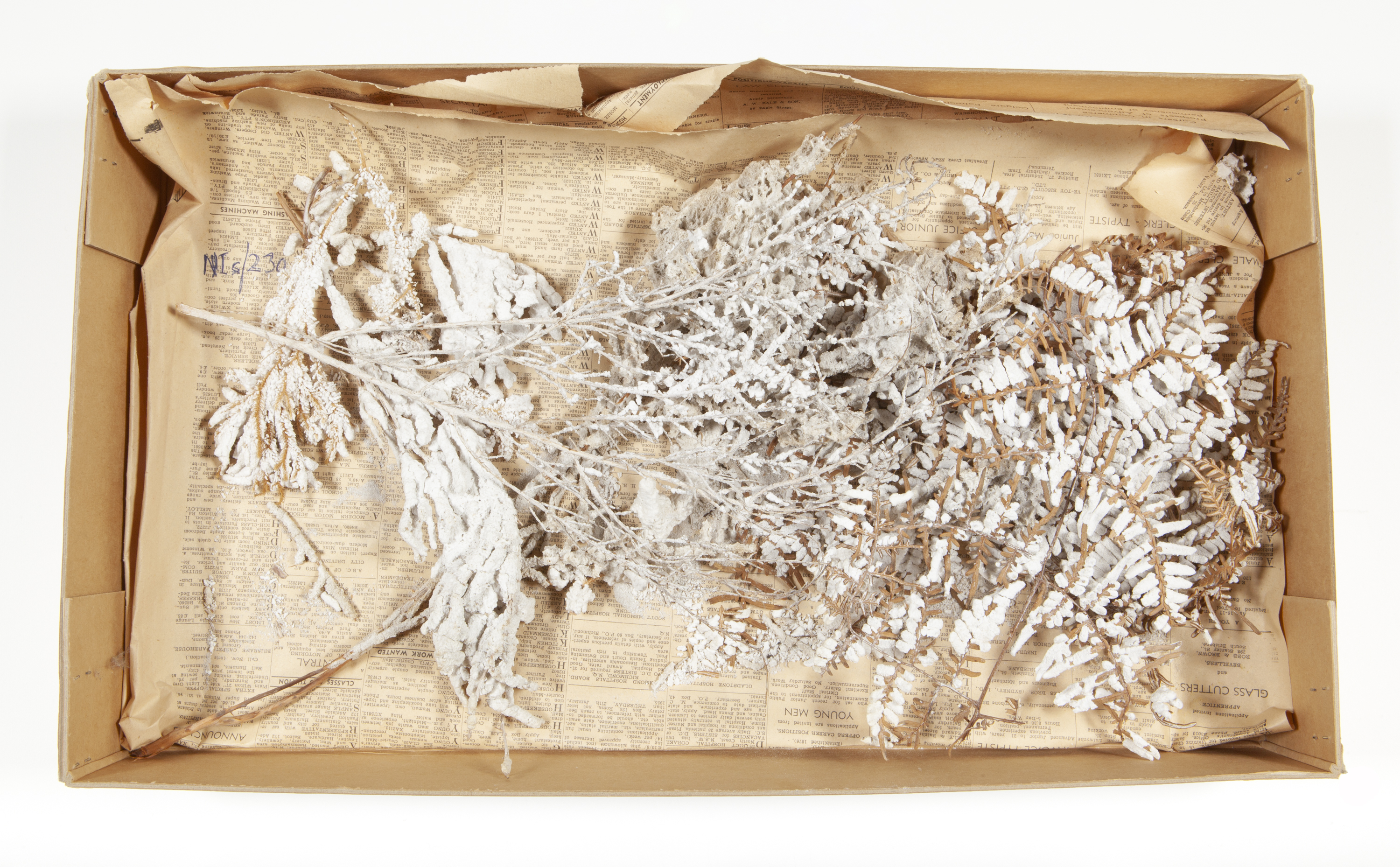
In November 1858 Eliza, travelling with Carl Volkner, was hosted at Tarawaru (near Matamata) by Wiremu Tāmihana Tarapīpipi Te Wahora. Eliza was a great hit with the women of the village. Despite not knowing Te Reo Māori, she read the Māori testament to an appreciative audience as well as answering endless questions about Queen Victoria.
When Eliza left, she was presented “in the name of the tribe” with what she described in her journal as a taiaha (long wooden weapon). This is thought to be the tokotoko or walking stick donated to Canterbury Museum in 2020. Eliza described it as “well carved” and said that it has been used by several generations of Tāmihana’s ancestors. She wrote that “it was highly valued by their descendants and its presentation to me was a mark of their high regard for me.”

A few months later “Miss Jones” visited the mission station where Reverend James Stack was teaching at Te Kohanga, Waikato. In his book More Maoriland Adventures, James described his future wife as “very active and energetic, and ready to walk over the roughest and steepest ground to see anything worth seeing”. Obviously smitten, James wrote that Eliza was a “delightful and appreciative companion” and “unlike any girl I had ever before met” because of her “strength and fearlessness”.
The couple were married in Auckland in January 1861 after which Eliza joined James at his posting at the Anglican Māori Mission based at Tuahiwi near Kaiapoi, north of Christchurch.

While Eliza was kept busy raising seven children, James became known as a European authority on the history of the South Island Māori and frequently worked as an interpreter. He wrote about Māori for the local newspapers and also gave public lectures to try and “enlighten European society in Canterbury, which largely ignore the Maori world”.
James contributed Māori placenames for Haast’s report on the headwaters of the Rakaia river and liaised between Haast and the Ngāti Porou carvers working on the meeting house Hau-Te-Ananui-o-Tangaroa, purchased by Canterbury Museum in 1873.
We will never know the extent of Eliza’s collecting because the Stacks' house and all of their possessions were destroyed by fire in May 1870. Eliza’s museum was lost but the incrustations survived as they had already been donated to the Museum, albeit with the name of her husband as the donor.
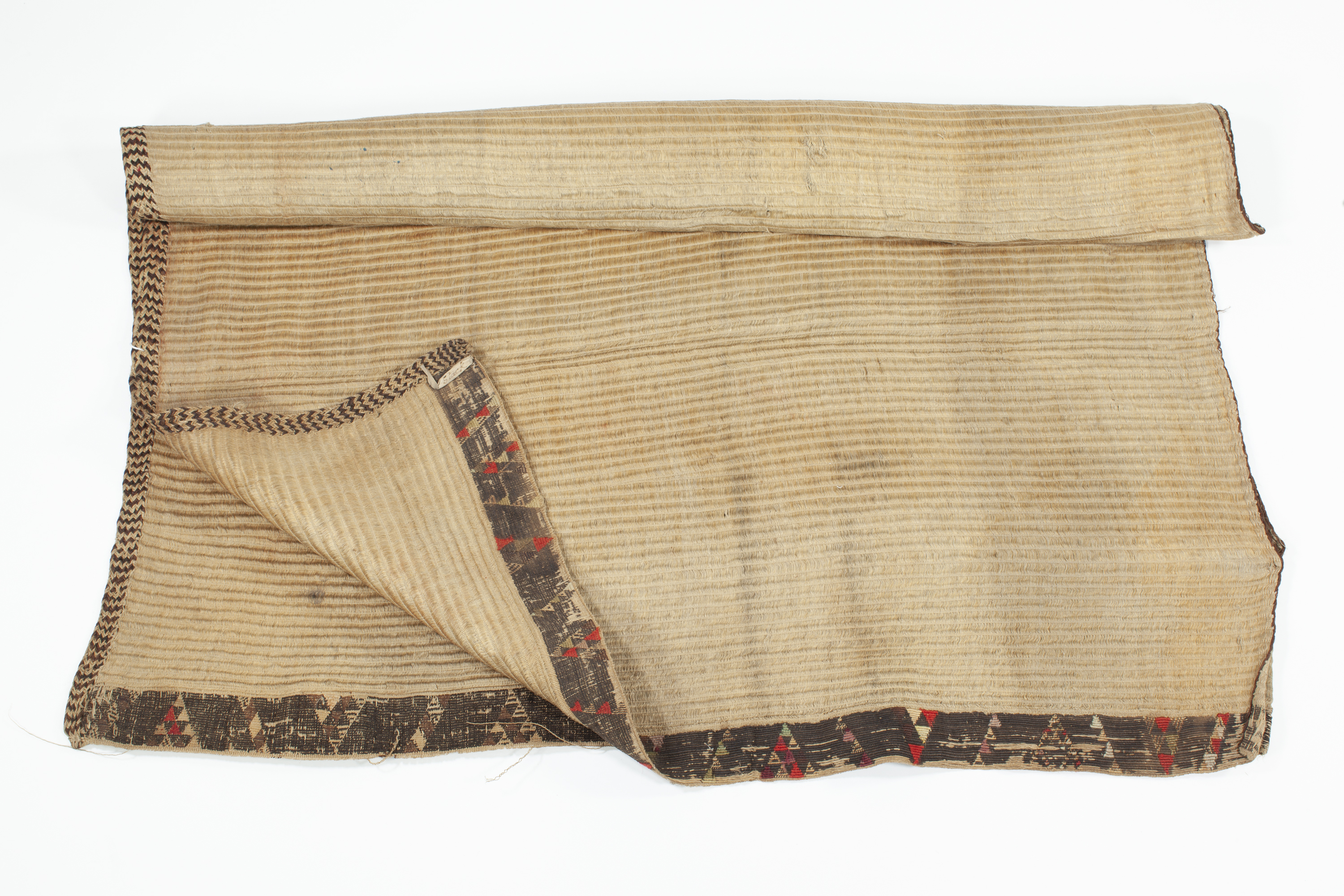
In 1872, the Stacks donated a tāniko (fine finger-woven) bordered kaitaka (flax fibre cloak) to Canterbury Museum (E140.33). The kaitaka has an unusual construction with a vertical aho (weft), shaping towards the side edges and a plaited lower edge. The circumstances of the donation and the significance of the kaitaka are unknown, as is the maker, but it is likely that it was made at Tuahiwi or Kaiapoi. The kaitaka can be seen hanging on the right in this Alfred Barker photograph of the Mountfort Gallery taken in 1872.
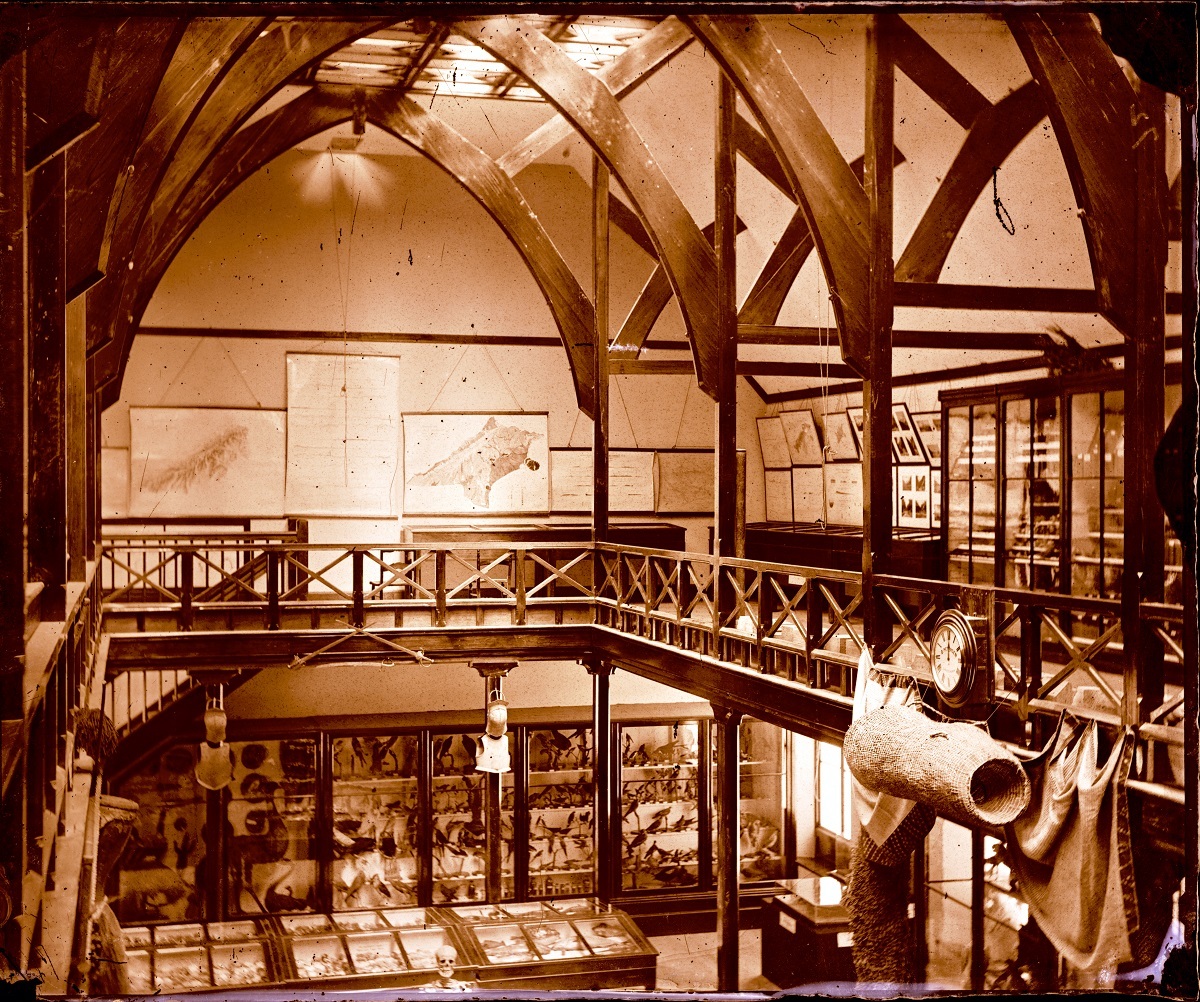
After the Stacks' house burned down, they lived temporarily at Kaiapoi before building a house at 56 Armagh Street, Christchurch, which is still standing. James retired from the Māori Mission in 1888 and was then at Fendalton Parish until 1898, when he and Eliza left New Zealand to live with Eliza’s brother Humphrey in Italy. The pair later settled at Worthing, England, and both died in 1919.
The Stacks' youngest daughter Dorothea Margaret, who had cared for her parents, returned to New Zealand in 1947 to visit her surviving siblings. Dorothea donated three of her father’s pounamu taonga to the Museum before she returned to England. It is not known who gifted these taonga to James but he was said to particularly treasure E150.526, which is made from tangiwai (bowenite) found near Milford Sound.

In 1984, a descendant of the Stacks' eldest daughter, Mary Scaife, made the permanent loan of two stunning kākahu (cloaks) to the Museum. Mary was born at Tuahiwi in 1862 and in November 1885 married Willis Scaife at Kaiapoi. It is possible that the two kākahu were given to Mary and Willis as wedding presents but this is entirely speculation. If they were made in 1885, the two kākahu would illustrate the transition from using native bird feathers (which were becoming scarce) to those of introduced species such as chicken and guinea fowl.
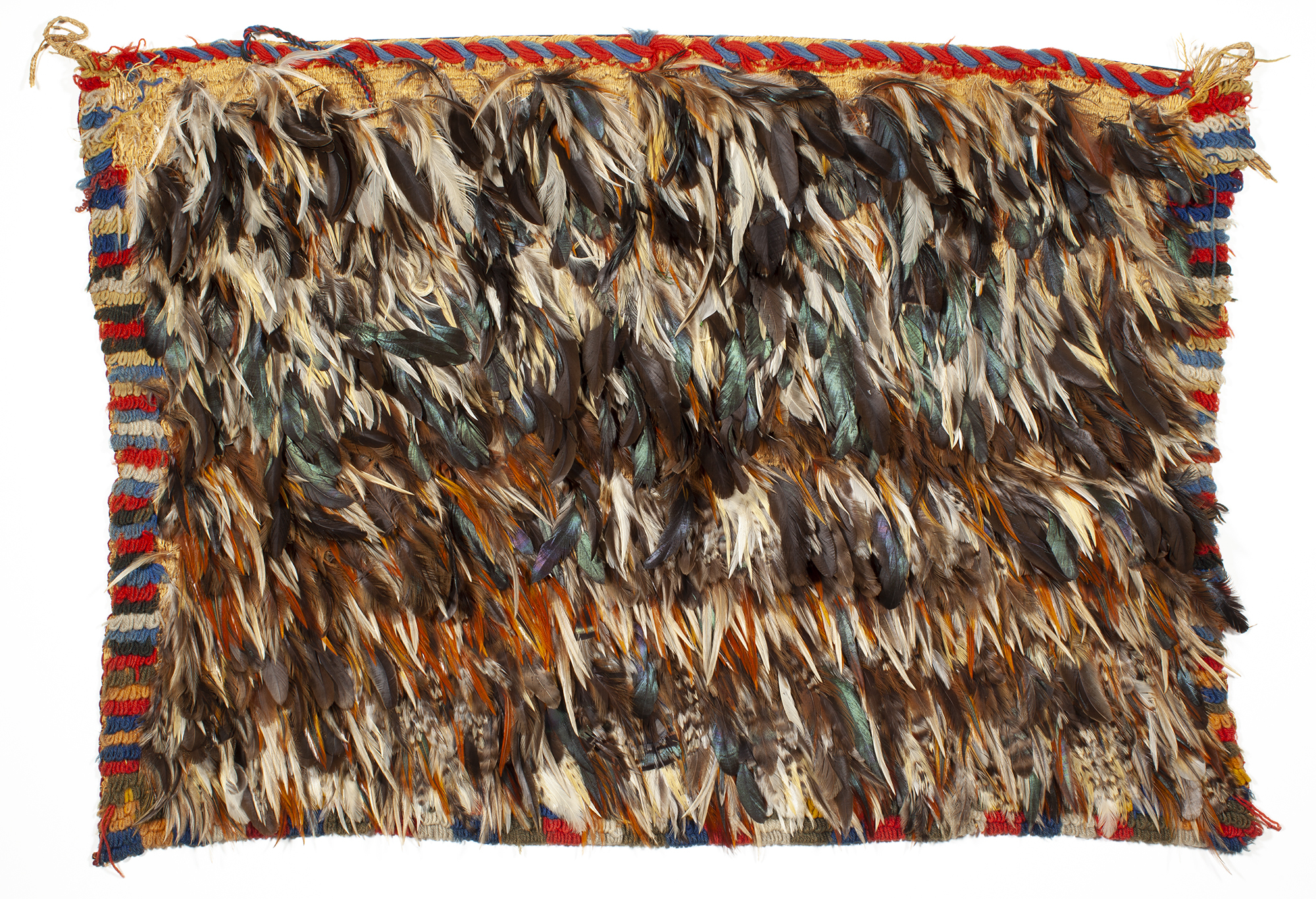

The most recent donation connected to the Stacks was the previously mentioned tokotoko gifted to Eliza in 1858. It is believed this survived the disastrous fire of 1870 which destroyed all of the family's possessions because Eliza had given the tokotoko to her brother Humphrey Stanley Herbert Jones before she left Auckland for Canterbury in 1861. Humphrey died without issue and the walking stick was passed down through the family of Humphrey’s nephew Humphrey Arthur Innes Jones until, after 162 years with the Stack family, it was donated to the Museum by his great grandson.
